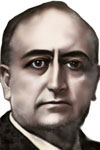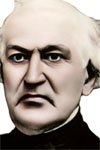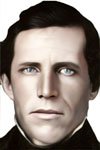Mormon Succession Crisis
Joseph Smith’s unexpected death on June 7, 1844, caused a crisis as to who would be his successor. Several assumed power and caused his church to split into several denominations. Some of the more notable include:

Brigham Young |
Those who sided with Brigham Young followed him to Utah. It is this denomination, The Church of Jesus Christ of Latter-day Saints—which has the largest membership—that is the focus of this handbook. | ||||

Joseph Smith III |
Some believed that Joseph’s son, Joseph Smith III, should be his successor. This movement became the Reorganized Church of Jesus Christ of Latter Day Saints. In 2001, it was renamed Community of Christ, which is the second largest Mormon denomination. | ||||

James J. Strang |
James produced a ‘letter of appointment’ he received from Joseph Smith as evidence of his successorship. Many prominent Mormons agreed and followed him—including three apostles, eight Book of Mormon witnesses, and Lucy Smith, Joseph’s mother. Like Joseph, James also claimed to have translated plates. This church exists today as the Church of Jesus Christ of Latter Day Saints, headquartered in Voree, Wisconsin.
|
||||

Sidney Rigdon |
Some followed Sidney Rigdon, who was Joseph’s First Counselor. William Bickerton continued this movement, which exists today as the Church of Jesus Christ. | ||||

Granville Hedrick |
Various smaller groups formed after Joseph’s death. In 1863, several groups along with John E. Page, an apostle under Joseph Smith, united under the leadership of Granville Hedrick. This church owns the Temple Lot spoken of in Joseph Smith’s *‘New Jerusalem prophecy’.
|
||||

David Whitmer |
When Joseph Smith ordained David Whitmer (a Book of Mormon witness) as President of the Missouri church, he also named David his successor.

|
||||







